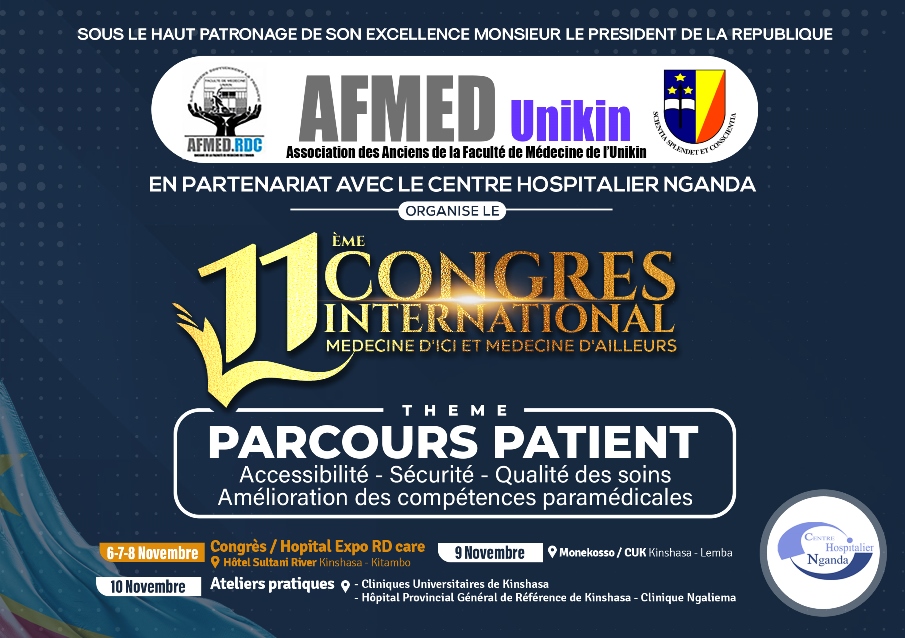
ABSTRACT
Background:
Little is known about the outcomes of HIV patients on anti-retroviral therapy (ART) in conflict settings. This study aimed to identify factors associated with survival among HIV patients on ART in a (post-) conflict setting. The study assessed also the incidence of the loss to follow-up (LTFU) and the nutritional status among HIV patients in Goma.
Methodology:
A historic cohort of 844 HIV patients from two major hospitals in Goma, DRC, was followed from 2004 to 2012. Kaplan-Meier was used to determine the probability of LTFU as a function of time. The log-rank test was used to compare survival curves based on determinants. The Cox regression model identified the determinants of survival since treatment induction until December 15th, 2012 (end point). A cross sectional survey was conducted to assess the nutritional status.
Results:
The median follow-up time was 3.99 years (IQR = 2.33 to 5.59). The percentage of deaths was estimated at 14.3% at the end of the observation period. The percentage of LTFU was 12% (95% CI: 9.6 – 14.4). Of the patients included, 69% were anemic (95% CI: 65.7 – 72.3) at baseline. Patients who did not disclose their HIV status, patients who did not live in the city of Goma, and those who attained secondary or higher education level had a higher hazard of being lost to follow-up.
Male sex (RR: 2.56; 95%CI 1.66 to 4.83), advanced clinical stage (RR: 2.12; 95%CI 1.15 to 3.90), the low CD4 count (CD4 <50) (RR:2.05; 95%CI: 1.22 to 3.45), anemia(RR: 3.95; 95%CI 2.60 to 6.01), absence of chemoprophylaxis with cotrimoxazole (RR: 4.29, 95% CI 2.69 to 6.86) and period of treatment initiation (2010-2011) (RR: 3.34; 95%CI 1.24 to 8.98) were risk factors for dying. In bivariate analysis, undernutrition was associated with short survival.
In the cross-sectional survey, the prevalence of food insecurity was 91.3% (95% CI: 89.0 – 93.6%). The prevalence of undernutrition was 24.1% (95% CI: 20.6 – 27.6%). The proportion of participants with depressive symptoms was estimated at 21.3% (95% CI: 17.1 – 25.5). The prevalence of loss of appetite was 50.1% (95% CI: 45 – 55%).
Conclusion:
This study reported high mortality and LTFU rates among HIV patients. It also suggests an initiation of treatment in advanced stage of the disease. More than two-thirds of patients had anemia at initiation of ART. Patients at an advanced clinical stage, low CD4 count (CD4 <50), anemia, chemoprophylaxis with cotrimoxazole, and period of treatment initiation between 2010 and 2011, were associated with short survival.
Keywords: HIV/AIDS, ART, Survival analysis, Anemia, Depressive symptoms, Loss of appetite, Undernutrition, Goma, DRC
RESUME
Contexte:
Peu des choses sont connues sur les issues vitales sous thérapies antirétrovirales (TARV) dans les milieux en conflits. L’étude avait comme objectif d’identifier les facteurs associés à la survie parmi les patients sous ARV dans un milieu en conflit. L’étude a aussi évalué l’incidence de perdu de vue (PDV) et l’état nutritionnel des patients VIH de la ville de Goma.
Méthodologie:
Dans sa première partie, l’étude a été réalisée sur une cohorte historique de 844 PVV mis sous TAR dans deux hôpitaux de la ville de Goma au cours de la période allant du 1er janvier 2004 au 15 décembre 2012. La méthode de Kaplan-Meier a décrit la probabilité de survie depuis l’inclusion dans la cohorte. Le test de Log-rank a comparé les courbes de survie en fonction des déterminants. Le modèle de régression de Cox a permis d’identifier les déterminants de survie après induction de traitement jusqu’au 15 décembre 2012. Dans la seconde partie du travail, une enquête transversale a été conduite entre le 1er février et le 3 mars 2016 pour évaluer l’état nutritionnel de ces patients.
Résultats:
La durée médiane de suivi des malades a été estimée à 3,99 années (EIQ = 2,33 à 5,59). La proportion de décès était estimée à 14,3% à la fin de la période d’observation. La proportion de perdu de vu était de 12% (IC95%: 9,6 – 14,4). Parmi les patients inclus, 69% étaient anémiques (IC95%: 65.7 – 72.3) à l’initiation du traitement. Des patients qui n’ont pas partagé leur statut sérologique avec leur partenaire, ceux qui vivaient loin de la ville de Goma et ceux ayant atteint un niveau d’instruction secondaire ou supérieur avaient un risque élevé d’être perdu de vu.
Le sexe masculin (RR: 2,56; IC95%: 1,66 – 3,93), le stade clinique très avancé de la maladie(stade IV) (RR: 2,12; IC95%:1,15 – 3,90), le taux de CD4 bas (CD4<50)(RR: 2,05; IC95%: 1,22 – 3,45); l’anémie (RR: 3,95; IC95%:2,60 – 6,01), l’absence de chimioprophylaxie au cotrimoxazole (RR:4,29; IC95%:2,69 – 6,86) ainsi que la période de l’instauration du traitement (2010-2011) (RR: 3,34; IC95%:1,24 – 8,98) étaient associés au décès.
Dans l’enquête transversale, la prévalence de l’insécurité alimentaire était de 91,3% (IC95%: 89,0 – 93,6%). La prévalence de la malnutrition était de 24,1% (IC95% : 20,6-27,6%). La proportion des participants présentant les symptômes dépressifs était de 21,3% (IC95% : 17,1 – 25,5). La prévalence de perte d’appétit était de 50,1% (IC95% : 45 – 55%).
Conclusion:
La présente étude a rapporté une mortalité élevée et un taux élevé de perdu de vue parmi ces patients sous TAR. Elle suggère aussi une initiation du traitement antirétroviral au stade avancé de la maladie. Plus de deux tiers de patients avaient l’anémie à l’initiation du traitement. Les patients au stade avancé (clinique et immunologique) de la maladie, avec anémie, ceux qui n’étaient pas sous chimioprophylaxie au cotrimoxazole et ceux ayant débuté le traitement durant la période de forte instabilité (2010-2011) avaient une courte survie.
Mots clé: VIH/Sida, ARV, analyse de survie, Anémie, symptômes Dépressifs, perte d’appétit, malnutrition, Goma, RDC









